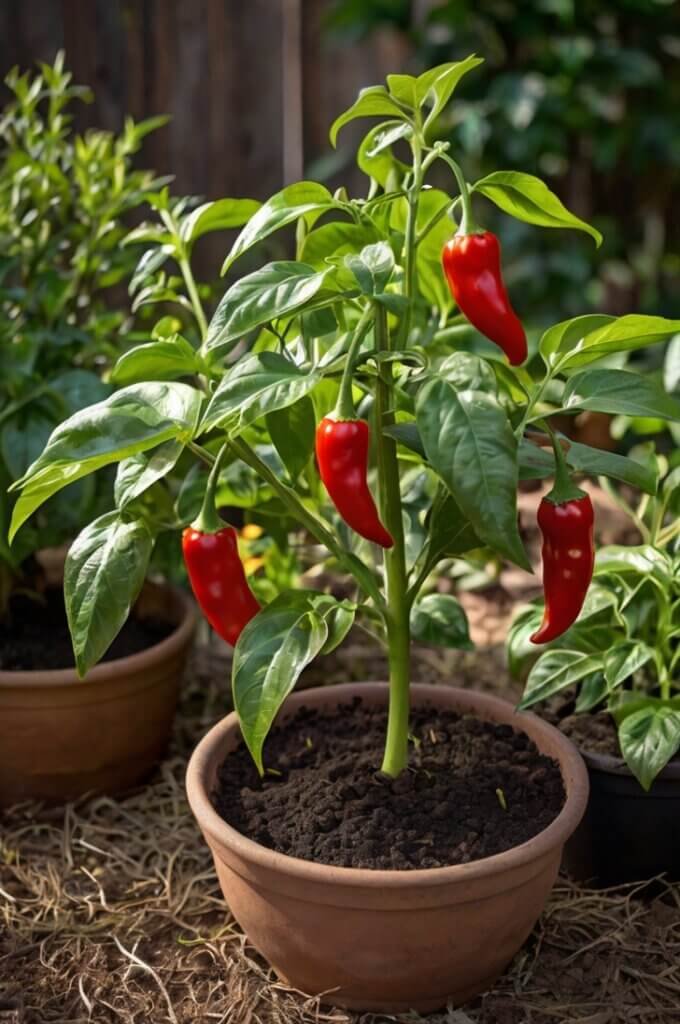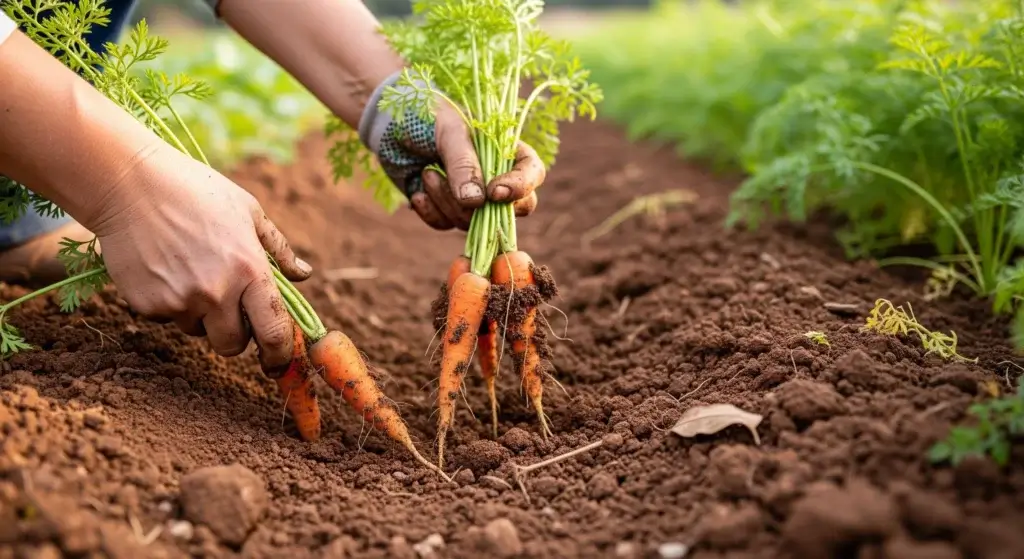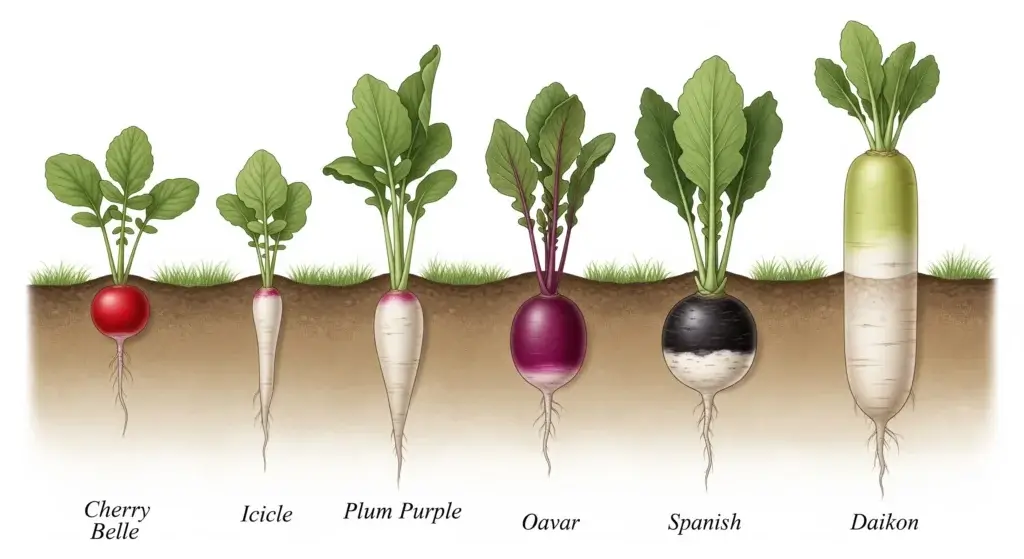
Peppers are sun-loving plants, but extreme heat can be their worst enemy.
When temperatures soar, your pepper plants can struggle with heat stress, leading to wilting, flower drop, sunscald, and stunted growth.
However, with the right strategies, you can help your peppers survive and even thrive during hot weather.
In this guide, we’ll explore heat stress in peppers, signs to look out for, and practical ways to protect your plants from high temperatures.
Understanding Heat Stress in Peppers
What is heat stress?
Heat stress happens when pepper plants can’t handle high temperatures, especially if there’s not enough water to keep them hydrated.
While peppers grow best in temperatures between 70°F and 85°F (21°C-29°C), anything above 90°F (32°C) can push them to their limits.
When it gets too hot, plants start showing signs of struggle, like wilting or dropping flowers.
- Read also: Managing Temperature Extremes for a Thriving Pepper Garden
- Read also: A Comprehensive Guide: Understanding Pepper Plant Nutrition
Signs of heat stress
When pepper plants face extreme heat, they show clear signs that they’re struggling.
Here’s what to look out for:
- Wilting leaves: Leaves may curl or droop as the plant tries to save water. This is often the first sign that your plant is feeling the heat.
- Flower drop: If flowers fall off before they can turn into peppers, it’s a sign the plant is stressed. This can lead to a smaller harvest.
- Sunscald: Peppers exposed to too much direct sun may develop white or brown patches. This is like a sunburn for your plants and can damage the fruit.
- Stunted growth: When it’s too hot, plants may stop growing altogether. They can look weak, pale, or just “stuck” in place.
Why Peppers Are Vulnerable
Peppers love warmth, but they also need the right balance of heat and moisture to thrive.
When temperatures get too high, this balance is thrown off, and the plants struggle.
Here’s why:
- Heat speeds up evaporation – High temperatures cause water to evaporate faster from the soil, leaving the roots dry and the plant thirsty.
- Too much sun can burn – Just like us, peppers can get “sunburned.” Too much direct sunlight can scorch leaves and fruit, leaving them damaged and less productive.
- Heat disrupts pollination – When it’s extremely hot, flowers may not pollinate properly. This means fewer peppers will form, reducing your overall harvest.

Simple Tips to Protect Your Peppers
Helping your pepper plants beat the heat doesn’t have to be complicated.
With a few smart strategies, you can keep them healthy and productive even during hot weather.
Here’s how:
Watering wisely
Water is your best defense against heat stress.
Here’s how to do it right:
- Water deeply but less often—about 1–2 inches per week is perfect. This encourages roots to grow deeper, where the soil stays cooler.
- Water in the morning so plants can soak up moisture before the sun gets too intense.
- Use drip irrigation or soaker hoses to deliver water straight to the roots, reducing waste and evaporation.
Mulching
Mulch is like a cozy blanket for your plants. It keeps the soil moist and cool.
- Spread a 2–3 inch layer of mulch around your peppers using materials like straw, grass clippings, or wood chips.
- Organic mulch can lower soil temperature by up to 10°F, giving your plants a much-needed break from the heat.
Providing shade
Too much sun can harm your peppers, so give them a little relief:
- Use shade cloths (30–50% blockage) during the hottest part of the day.
- Plant peppers near taller crops, like corn or sunflowers, to create natural shade.
- If your peppers are in containers, move them to a spot with partial shade during heatwaves.
Improving air circulation
Good airflow keeps plants cool and reduces the risk of disease.
- Space your plants 12–18 inches apart to prevent overcrowding.
- Prune lower leaves and remove excess growth to let air move freely around the plant.
- In greenhouses, use a gentle fan to keep the air circulating.
Soil and nutrients
Healthy soil helps plants handle heat better.
- Make sure your soil drains well to avoid waterlogging.
- Add compost or organic matter to improve moisture retention and soil structure.
- Use a potassium-rich fertilizer—potassium helps plants manage water more effectively.
Extra protection for extreme heat
If temperatures soar above 95°F (35°C), take these extra steps:
- Mist your plants lightly in the morning or evening to cool them down.
- Use row covers to shield plants from intense sun.
- Lay reflective materials, like white plastic mulch, to bounce heat away from the soil.

Recovery and Prevention
What to do if your peppers show signs of heat stress
If your pepper plants start wilting, showing sunscald, or dropping flowers, don’t panic!
Here’s how to help them bounce back:
- Water deeply: Give your plants a thorough watering to replenish lost moisture. Make sure the water reaches the roots, where it’s needed most.
- Provide shade or move potted plants: If your peppers are in pots, move them to a cooler, shaded spot. For garden plants, use shade cloth or create temporary shade to protect them from harsh sun.
- Trim damaged leaves: Carefully remove any leaves that are scorched or severely wilted. This helps the plant focus its energy on recovering and growing new, healthy foliage.
- Hold off on fertilizer: Avoid fertilizing until your plants show signs of recovery. Too many nutrients can add stress to an already struggling plant.
Tips for Preventing Future Heat Stress
To keep your pepper plants thriving, even during hot weather, a little planning goes a long way.
Here are some practical tips to help you avoid heat stress in the future:
Choose heat-tolerant varieties
Some pepper varieties handle heat better than others. If you live in a hot climate, consider planting these resilient types:
- Jalapeño (‘Jalafuego’) – Known for its spicy kick and ability to withstand heat.
- Habanero (‘Caribbean Red’) – A fiery pepper that thrives in warm conditions.
- Bell Pepper (‘California Wonder’) – A classic sweet pepper that’s more heat-tolerant than other bell varieties.
Plan your garden layout
When designing your garden, think about shade.
Position your peppers so they’re protected from the intense afternoon sun, either by taller plants, structures, or natural shade.
Monitor soil moisture
Use a soil moisture meter to keep track of how much water your plants are getting.
This helps you water more effectively and avoid over- or under-watering.
Harden off seedlings
Before transplanting young pepper plants into the garden, gradually expose them to sunlight over a week or two.
This process, called hardening off, helps them adjust to outdoor conditions and reduces the risk of heat stress.

- Read also: Gardening Tips: How to Boost Pollination in Pepper Plants
- Read also: Creating a Pepper Maintenance Schedule: Tips for a Healthy Harvest
Final Thoughts
Peppers love warm weather, but excessive heat can quickly become a problem.
By watering wisely, using mulch, providing shade, and improving air circulation, you can protect your peppers from heat stress.
If plants show signs of stress, act quickly to provide relief and ensure a healthy harvest.
With these tips, your peppers can thrive even in the hottest summer months!



